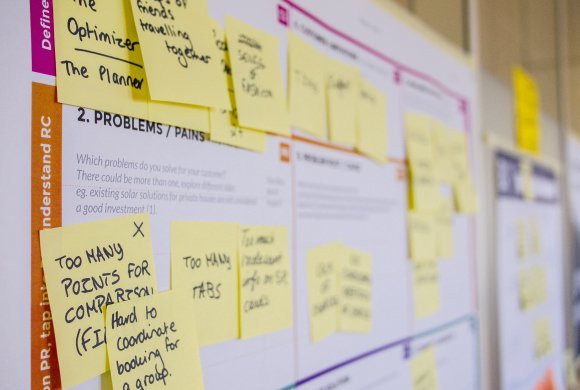To do or not to do annual performance reviews? That is a question being asked on a broad scale by businesses in all industries and by companies large and small. The tide has certainly already shifted from the traditional, static meetings where performance feedback is withheld for a year until it’s all dumped on the boardroom table while employees struggle to remember the specifics of what they are hearing. Meetings end with team members being given a list of “improvement areas” and for the most part, walk away at best, bored and at worst demoralized. Further, reviews that rely heavily on metrics (meets or exceeds standards, or needs improvement) leave people feeling more like numbers or data than complex, dynamic individuals in constantly changing complex and dynamic work environments.
Iman Jalali, Consultant, Entrepreneur & Former President of TrainSignal in his article, Should You Ditch Annual Performance Reviews? It Depends writes: “Old business conventions are dying out. The workplace is changing to accommodate the needs of a constantly moving world and businesses need to evolve or risk being left behind. More and more companies are saying goodbye to annual performance reviews, recognizing that the traditional performance review doesn’t mesh with the workforce of today, nor is it as real-time or near-time as the ever-changing needs of a business.”
Some companies rely on those competency-based metrics in order to make salary and talent planning decisions, however, the annual review should no longer be the only time performance is measured. It simply isn’t enough, as expressed by Lisa Bodell, founder and CEO of FutureThink. “More than 90% of employees would prefer their manager to address mistakes and learning opportunities in real-time, according to a study from Wakefield Research. This isn’t news to companies like Deloitte, The Gap, and Adobe, which have replaced performance reviews with continuous feedback loops. They understand that traditional performance evals are no longer practical for today’s data-driven HR departments.”
There’s no doubt that the old school, annual “dump truck” reviews no longer fit into today’s effective workforce practices, and especially with a younger workforce. These performance reviews are also flawed as they are meant to improve the future, but primarily focus on the past. In addition, the return on investment of annual reviews is questionable when the time required from management to prepare for and deliver complex annual reviews is high, and the resulting engagement and performance improvement is low.
All or Nothing?
If your company relies heavily on clear performance and competency benchmarks or KPI’s it may seem impossible to let your annual reviews go in favour of ongoing, real-time feedback. However, the answer may lie somewhere in the middle. It’s more about changing the way you conduct reviews, than the kind of reviews you conduct. Moving from a static process whereby the manager delivers the feedback and decides improvement measures to one where the employee has an equal share and responsibility to participate in the feedback process, is the key to moving the needle on effectiveness. In addition, annual reviews should always be conducted in the context of other, ongoing feedback employees receive as part of their day-to-day work. If performance issues are being addressed all year long, the annual review should hold no surprises and be future instead of past focused.
Consider the following simple elements of an annual review conversation:
- Celebrate past achievements – what went really well? What was the employee most proud of accomplishing? Where did they feel they were at their best and contributed the most? What parts of their job had them eager to come to work?
- Identify past roadblocks to success – what stood in their way from achieving what they wanted to achieve? Where did they not feel they were at their best and what created that dynamic? How much of this was within their control and how much did the company contribute to those challenges.
- Focus on future success – what could you do to support them in being at their best most of the time? What roadblocks to success can you remove?
- Identify growth opportunities – where would they like to grow in the coming year? What development, mentorship, or training opportunities would help them take their performance to the next level? What opportunities for learning get them excited?
If you are ready to move away from annual reviews and lean in to a more intentional, conversation-based feedback process, consider the following options:
1. Regular check-ins for ongoing feedback. By coaching people in real-time — instead of trying to recall mistakes or successes from months ago —check-ins enable managers to identify and resolve performance issues in a timely manner.
2. Quarterly performance goals. These are far more practical for today’s business environment and more accurate reflection of the employee’s overall performance. The shorter timeframe works better in today’s rapidly changing work world.
Technology to increase engagement. There are dozens of app-based performance management programs that allow employees to view and track goals and performance measures on their phones, keeping it front of mind and increasing engagement and motivation.
4. In-the-moment performance snapshots. Evaluate an employee at a single moment in time, often after a project is completed. Snapshots enable managers to dialogue with employees about recent performance while a project is still top of mind. In this context, performance recognition can be given; challenges or obstacles can be identified; and if needed, training or skill-building can be arranged.
“Whether or not you’re prepared to simplify your review process, the evolution is already in progress.” says Blodell. “Ranking systems and endless forms will soon go the way of typewriters and pagers. In their place will be a simpler system of real-time feedback and productive dialogue that is supported by technology instead of solely dictated by algorithms.”
Real-time, continuous feedback has been shown to significantly improve performance and employee engagement (and thus, lower turnover) and is the way of the future. As you plan your business strategy, consider what small steps you can take each year to ensure that your employees are getting feedback in a way that is meaningful for them (not just for you). When they connect growth and learning opportunities in their job roles and can make immediate adjustments that lead to success, you will reap the benefits of a happier, more connected and motivated workforce.




